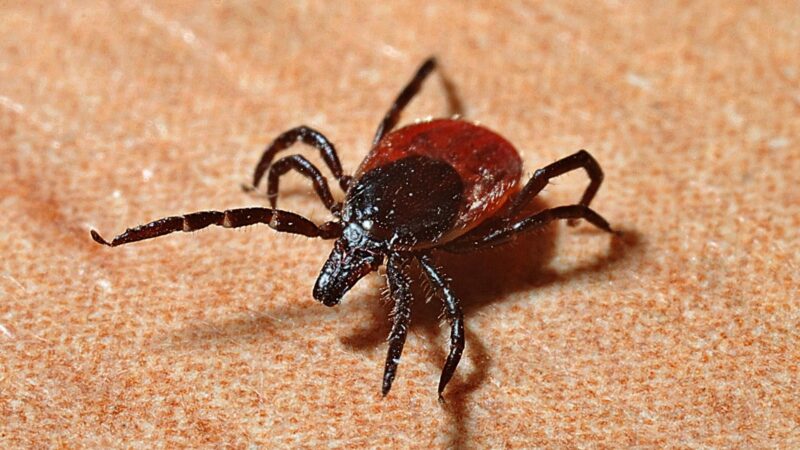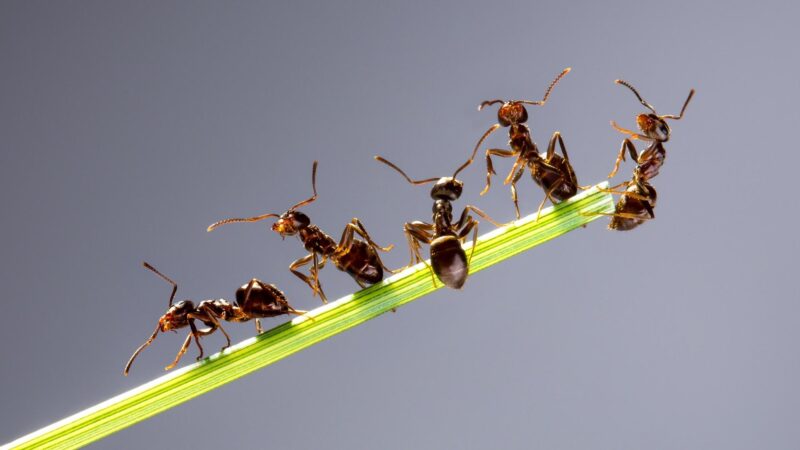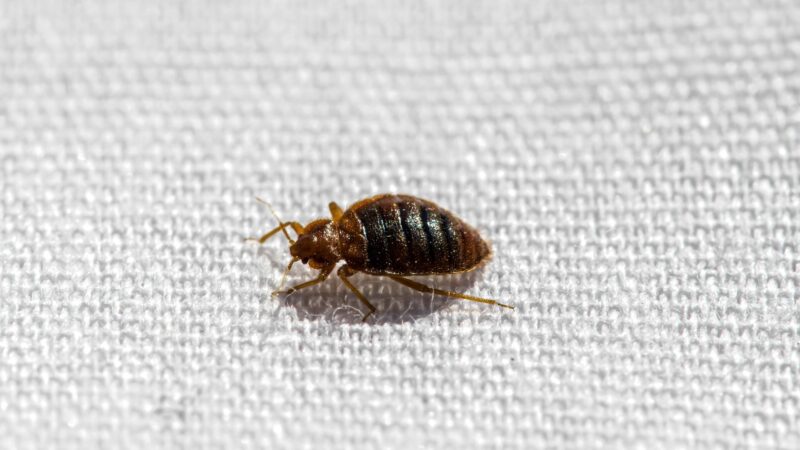When summer comes, everyone is excited to go out and enjoy outdoor activities. While people spend time outside and become active, some bugs also do the same thing.
Apart from appreciating the clear, blue sky and nice view, you’ll likely come across these bugs.
What are the most common bugs of summer? The common bugs of summer are mosquitoes, ticks, stinging insects, flies, ants, bed bugs, stink bugs, termites, and cicadas. They’re different insects, but all of them are visible in high numbers during summer.
These insects have different behaviors, and you have to watch out for them. Some may help you to improve your garden, but some bring destruction. It has already come to your knowledge that some of these can bite and sting.
The part that you have to worry about the most is their ability to bring illness and diseases.
Table of Contents
Common Summer Bugs | Identification
Mosquitoes

Mosquitoes stay in the water before they become adults. Not all of the species spread diseases, as only Aedes, Anopheles, and Culex are the carriers.
- Appearance: Various colors; slender; long legs; hairy wings; tube-like mouth
- Size: 3–9 mm
- Scientific Name: Culicidae
- Lifespan: Male mosquitoes can live a week or two, while females that are engorged with blood can live for several months.
- Habitat: Streams, shallow ponds, pools, marshes, manure piles, sewage ditches, barrels
- Diet: All mosquitoes need carbohydrates, so they have the energy to fly, mate, and search for a blood host. Only females feed on blood which provides protein to develop eggs.
- Threat:
- Dengue – In mild cases, there will be high fever, headache, rash, and joint pain. When it becomes severe, the patient can go through hemorrhagic fever with struggles with breathing and bleeding. Unfortunately, this leads to fatality.
- Zika virus – It’s a mild disease with symptoms of rash, joint pain, and fever. However, it gets worse when it infects pregnant women. The babies of infected mothers will likely have smaller heads than regular size or microcephaly. When this happens, mild to severe issues can hinder a child’s development and even lead to death.
- Malaria – This is an infection of red blood cells that causes high fever, flu-like symptoms, chills, and anemia.
- Yellow fever – The initial symptoms of this fever are similar to malaria. Some patients suffer nausea. Only a few of them proceed to severe conditions with bleeding eyes, nose, mouth, and jaundice.
- West Nile – 80% of the affected individuals don’t experience symptoms like nausea, fever, and aches. However, severe cases give rise to convulsions, fever, stiff neck, paralysis, weakness, and even death.
- Control: The best way to control mosquitoes is not giving them a chance to reproduce, so get rid of standing water in your house and yard.
Ticks

Ticks can’t fly or jump, but they climb shrubs or grasses to get in contact with animals and humans.
- Appearance: Wingless; has flat, oval body; has eight legs; reddish tan or darker color
- Size: Around 3 mm
- Scientific Name: Ixodes dammini
- Lifespan: A year or two or even more
- Habitat: Moist woodlands and vegetation areas, grassy fields or yards
- Diet: Blood meal
- Threat: One of the threats is Lyme disease. This affects both humans and animals. The symptoms of mild cases in people are headache, body aches, stiff neck, and rashes. But not everyone gets rashes. Things can get worse in weeks or months when the bacteria that causes this disease gets into the heart or brain.
The signs of Lyme disease on animals may take 2 to 5 months to appear. Affected ones display joint pain like that of arthritis and lameness. It’s a rare case that this disease will also damage the heart or kidneys of animals.
- Control: You can control ticks by using repellents with DEET like Repel and plant-based Tick Ban. Remove tall shrubs, bushes, and grasses in your yard, or don’t get near them.
Stinging Insects

The common stinging insects are ants, social bees, and social wasps. They sting for defense whenever they feel threatened.
- Appearance: With bright colors like black and red or black and yellow stripes
- Size: .15 mm to 6 mm
- Scientific Name: Hymenoptera
- Lifespan: A few months to a year or two
- Habitat: In colonies and nests
- Diet: Nectar, pollen, plant matter
- Threat: Allergic reaction
- Control: Lure traps
Flies

This insect is always found near humans or involved in their activities.
- Appearance: Red eyes; spongy mouth; gray or yellowish abdomen; With wings that have veins
- Size: 6 to 7 mm
- Scientific Name: Diptera
- Lifespan: 15 to 25 days or can be up to 2 months
- Habitat: Shrubs, trees, buildings
- Diet: Sugar, manure
- Threat: Transmission of food poisoning, parasitic worms, typhoid fever, tuberculosis, anthrax, dysentery, and ophthalmia
- Control: Swatter; fly trap; spray for flies like Flybuster Fly Trap; not spilling garbage
Related: How Long Do Flies Live? | Information and Facts
Ants

Ants specifically fire ants enjoy summer, but you don’t have to disturb them as they can deliver a painful sting.
- Appearance: Large, square head; color red to dark brown; large mandibles; elbowed antennae
- Size: 6 mm to 12 mm
- Scientific Name: Formicidae
- Lifespan: 5 weeks (workers); 7 years or more (Queen ant)
- Habitat: Wooded environment; open grassland with clay loam soil
- Diet: Plants, other insects like ticks, termites, fleas, and others, including their eggs and larvae
- Threat: Sting and allergic reaction
- Control: Mound drenches, pesticides, granular, or dust
Related: Poison Ants DIY | Information and Control Guide
Bed Bugs

Bed bug bites are sometimes mistaken for fleas or mosquitoes. Luckily, they don’t cause diseases.
- Appearance: Wingless; brown to purplish-red; flat and oval to cigar form
- Size: 5 mm to 9 mm
- Scientific Name: Cimex lectularius
- Lifespan: 4 to 6 months or up to a year
- Habitat: Beddings, Cushions, curtains, couches, chairs, appliances, drawer joints, at the junction
- Diet: Blood meal
- Threat: Bites causes red spot, rashes, or hives
- Control: Heat exposure (122°F for at least 20 minutes)
Related: Early Warning Signs of Bed Bugs Infestation | What Does It Mean?
Stink Bugs

Just like what its name suggests, this bug releases a stinky smell when disturbed or threatened.
- Appearance: Grayish-brown; with 6 legs; triangular-shaped body
- Size: 19 mm
- Scientific Name: Halyomorpha halys
- Lifespan: 6 to 8 months
- Habitat: Sides of the house, ceiling, voids, crack, crevices
- Diet: Fruits, vegetables, crops
- Threat: Making houses as overwintering sites; damaging crops, fruit, and vegetables
- Control: Vacuuming
Termites

An estimated $2 billion is spent per year to control the wood-destroying termite in the United States.
- Appearance: Eyeless, cream-colored
- Size: 6 mm
- Scientific Name: Reticulitermes flavipes
- Lifespan: 10 to 14 months; Up to 4 years (swarmers)
- Habitat: Colony of tunnel made of soil
- Diet: Wood, paper, cardboard, and other cellulose-rich products
- Threat: Damages to wooden infrastructure
- Control: Termiticide used in ‘trench and treat,’ and bait
Related: How to Attract Termites? | Information and Control Guide
Cicadas
The high-pitched sound is made by male cicadas to attract females, and it can be annoying at times.
- Appearance: With black body, legs, and eyes; reddish-orange wing veins
- Size: 25 mm to 38 mm
- Scientific Name: Neotibicen canicularis
- Lifespan: 4 to 5 weeks
- Habitat: Trees like apple, hickory, pear, dogwood, and oak
- Diet: Plant fluids
- Threat: Egg-laying habits damage twigs and can stunt the growth or kill newly planted and young plants
- Control: Protecting young plants and ornamental ponds with tulle or any breathable fabric, plastic mesh, or screen
Related: Cicada Killers | How Dangerous Are They?
Why Are There More Bugs in the Summer? Do They Come Out During Summer?
All bugs are cold-blooded, and this means they don’t produce the heat that their bodies need. They depend on their environment to regulate their body temperature, so they can function properly. With the daylight and rising temperature in summer, bugs thrive.
Aside from the heat that these bugs need for their bodies, another reason why there’s an increase in their number is reproduction. They come out during summer to mate and produce offspring.
The hot weather helps them to produce the next generation. However, some insects can’t tolerate a certain degree of heat, but the ones listed in this article can surely withstand summer.
What Happens to Bugs in the Summer?
To identify what happens to bugs in the summer is to look at their activities, which are as follows:
Bugs become active because of the summer heat, so they can fly or move around. This is not only useful for food searching, but also for finding a mate. They can have different activities.
For instance, the neuromuscular apparatus that cicadas use for their vocalization is temperature-dependent. The temperature should be 24 to 38.5 degrees Celsius so they can produce their songs for finding a mate.
The next thing is laying eggs and letting them develop into adults. Even though they haven’t turned into adults, some bugs can damage crops and plants.
They feed on fruits, vegetables, stems, twigs, and leaves for their growth development. Therefore, it makes them pests to humans’ gardens, orchards, and farms.
Since some insects are disease carriers, the increase in their population makes these diseases prevalent. As people enjoy the warm summer days outside, they’re exposed to these bugs and diseases.
The Department of Health of every state advises people to watch out and be vigilant with insect-related summer diseases. Repellents with DEET and essential oils are used to exterminate these insects.
Are Bugs More Common in the Summer?
Bugs are more common in summer as they thrive in warm weather with access to food sources, and they have the chance to reproduce.
How Hot Is Too Hot for Bugs?
You may wonder how hot is too hot for bugs as heat is used to kill bed bugs. As mentioned, 24 to 38.5°C is the ideal temperature for cicadas to do their vocalization. When the temperature exceeds, they can be in a heat coma.
Based on the study of how tropical insects withstand heat, the temperature of around 38°C can put nymphs in a heat coma. They’re deprived of coordinated movements. In the case of adults, it’s 42 to 43°C. An experiment in the same study showed that these temperatures can kill both adults and nymphs after half an hour of exposure.
Summary
There are various bugs that you can find swarming in summer, and enjoy the warmth as you do. You have to protect yourself as some of them can carry diseases.
Although some bites don’t cause serious consequences, it gives you discomfort because of itchiness. You have to be aware of their presence if you have gardens and farms, as they will benefit from your plants long before the expected time of harvest.